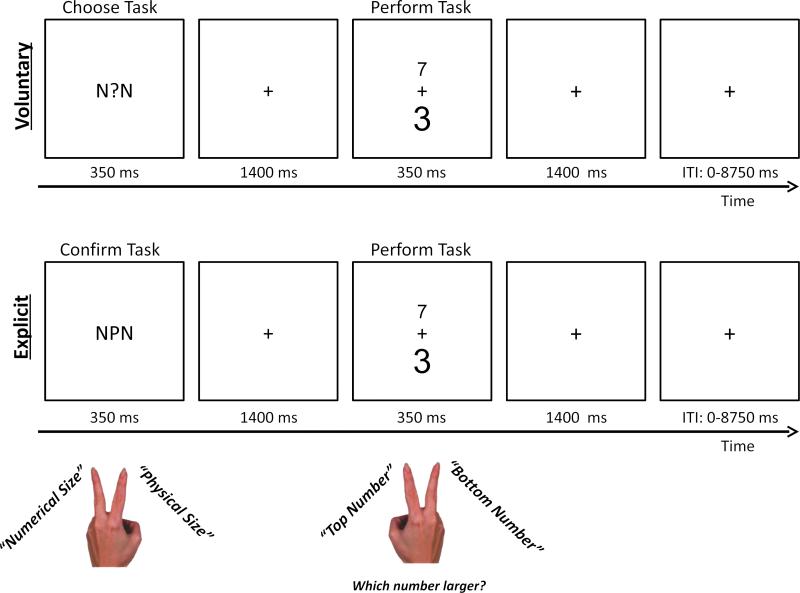Figure 1.
Examples of typical voluntary task choice and explicit task trials. Participants performed a task switching version of the numerical Stroop task, which involved comparing two digits with respect to their numerical size or with respect to their physical size. Each voluntary task choice trial began with the presentation of a central question mark (“?”), which indicated that participants should voluntarily choose which task to perform in the current trial. Participants were instructed to indicate their task choice by pressing a button with the middle or index finger of their left hand. Each explicit task trial began with the presentation of a central cue letter, which indicated that participants should choose to perform either the numerical or the physical size comparison task. Participants were instructed to confirm their task choice by pressing a button with the middle or index finger of their left hand. In both voluntary and explicit task trials, the central cue was flanked by two identical distracter letters that were associated with the numerical size comparison task (i.e., two “Ns”), the physical size comparison task (i.e., two “Ps”), or neither task (i.e., two “Os”). The cue and flanking distracter letters were presented for 350 ms. After a delay of 1400 ms, the imperative task stimuli (i.e., two digits) appeared. One was numerically larger (e.g., “7”) while the other was numerically smaller (e.g., “3”). Further, one was presented in a larger font (e.g., “3”) while the other was presented in a smaller font (e.g., “7”). Depending on the task, participants indicated which of the two digits (top or bottom) was numerically larger or physically larger. The target stimuli remained on the screen for 350 ms and the trial ended after a delay of 1400 ms. The next trial began after a jittered inter-trial interval ranging from 0 to 8750 ms, in units of 1750 ms.

